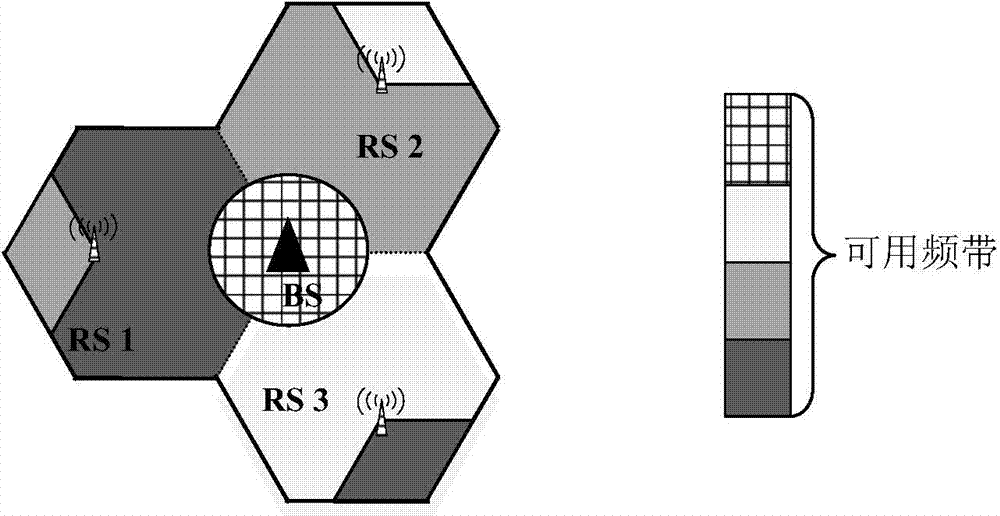Relay directional configuration combined frequency division multiplexing method facing long term evolution-advanced (LTE-A)
An LTE-A, directional antenna technology, applied in the field of spectrum allocation of relay cellular systems, can solve problems affecting system performance, unreasonable resource allocation, system performance degradation, etc.
- Summary
- Abstract
- Description
- Claims
- Application Information
AI Technical Summary
Problems solved by technology
Method used
Image
Examples
Embodiment Construction
[0035] A system-level simulation platform is built according to the stipulations of the protocol in 3GPP, and the frequency spectrum allocation scheme provided by the present invention is simulated and tested on this platform. In order to compare the performance, the relay system with time division multiplexing mode and the relay system with separated base station link and relay link spectrum are also simulated and tested. The specific implementation plan is as follows:
[0036] Method (1): a relay system in a time-division multiplex mode;
[0037] Method (2): a relay system in which the spectrum of the base station link and the relay link are separated;
[0038] Method (3): the method of the present invention
[0039] The main steps of the program are as follows:
[0040]1.) According to the spectrum allocation scheme shown in the figure, the interference sets of users accessing different sites are different. When user k accesses the central user group of base station i, th...
PUM
 Login to View More
Login to View More Abstract
Description
Claims
Application Information
 Login to View More
Login to View More - R&D
- Intellectual Property
- Life Sciences
- Materials
- Tech Scout
- Unparalleled Data Quality
- Higher Quality Content
- 60% Fewer Hallucinations
Browse by: Latest US Patents, China's latest patents, Technical Efficacy Thesaurus, Application Domain, Technology Topic, Popular Technical Reports.
© 2025 PatSnap. All rights reserved.Legal|Privacy policy|Modern Slavery Act Transparency Statement|Sitemap|About US| Contact US: help@patsnap.com



